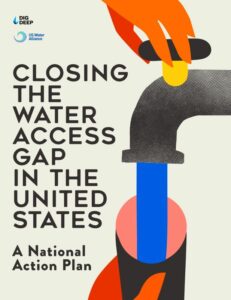More than two million people in the United States live without running water, basic indoor plumbing and sanitation. To close this water gap, it is first important to understand it. The report analyzes the quantitative data from the American Community Survey (ACS) from the US Census Bureau as well as qualitative data from six regions that face water and sanitation access challenges. The authors also outline solutions.
The report is organized into three sections:
- What the Data Tell Us: The main findings are that the federal data does not accurately measure the water access gap, race is the strongest predictor of water and sanitation access, poverty is the key obstacle, challenges affect entire communities, and progress is uneven.
- Who is Affected: This section highlights case studies from locations around the United States including California’s Central Valley, the Navajo Nation, the Texas colonias, rural areas in the South, Appalachia, and Puerto Rico.
- What to Do About It: This section provides a multi-faceted action plan, highlighting strategies and practices that are improving water access for vulnerable communities organized around four main principles: Reimagine the Solution, Deploy Resources Strategically, Build Community Power, and Foster Creative Collaboration.
The goal of the report is to create a national response that ensures “safe, acceptable, accessible, affordable, and non-discriminatory access to water and wastewater services to all people.”
Citation: Zoë Roller, Gasteyer, S, Nelson, N., Lai, W., and Shingne, M. 2019. Closing the Water Access Gap in the United States: A National Action Plan. Dig Deep and U.S. Water Alliance. Accessed Nov 19, 2019 from: http://uswateralliance.org/sites/uswateralliance.org/files/Closing%20the%20Water%20Access%20Gap%20in%20the%20United%20States_DIGITAL.pdf

